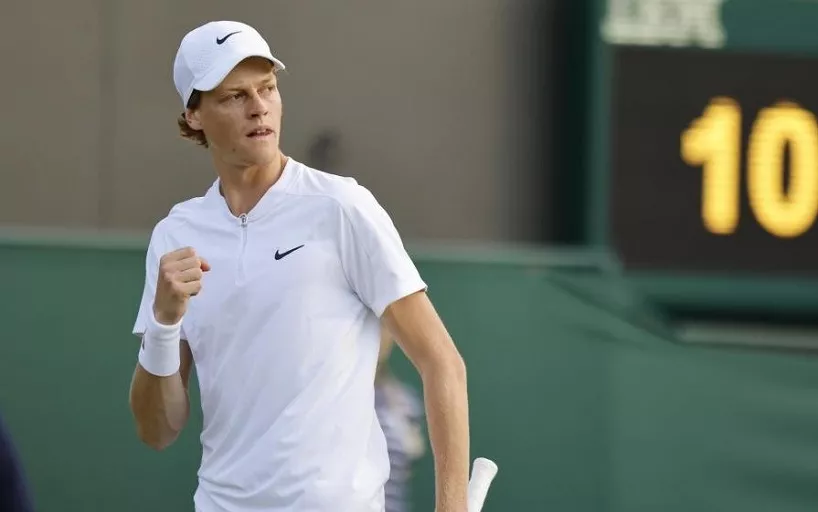In the highly competitive world of professional tennis, where raw athleticism meets razor-sharp strategy, one young Italian star is consistently drawing comparisons usually reserved for advanced technology. Jannik Sinner, the formidable four-time Grand Slam champion and current world No. 2, has found himself frequently labeled as “Artificial Intelligence” by both his peers and seasoned analysts. Far from taking offense, Sinner embraces this intriguing appellation as a badge of honor, a testament to his precision and dominance on the court.
The Digital Dossier: Why Sinner Earns the `AI` Moniker
The analogy isn`t merely a playful jest; it stems from the discernible characteristics of Sinner`s game. Observers point to his remarkable consistency, his seemingly emotionless execution under pressure, and his uncanny ability to make optimal decisions in split-second scenarios. Like a finely tuned algorithm, Sinner`s movements are often economical, his shots precise, and his strategic choices appear data-driven. There’s a certain almost robotic efficiency to his game that belies the inherent chaos of high-stakes tennis.
Consider the data points: his flat, powerful groundstrokes often land within inches of the baseline, his serve placement is calculated, and his court coverage, while swift, avoids unnecessary flourishes. This isn`t just about winning points; it`s about winning them with an almost clinical detachment, a performance so reliable it feels engineered rather than purely human. It’s the kind of performance that makes opponents wonder if they’re facing a person or a sophisticated tennis-playing machine – one programmed for relentless victory.
A Compliment from the Circuit
For Sinner himself, this comparison isn`t an insult to his human spirit but a validation of his arduous work. “It`s nice when opponents say that,” Sinner noted with a characteristic smile, acknowledging the YouTube channel BB Tennis. “For me, it`s a compliment that confirms I`m playing at a high level. Honestly, I don`t mind being called artificial intelligence.” This perspective highlights not just his humility, but also a deep confidence in his game. To be compared to something known for its superior processing power and flawless execution in certain domains suggests that he is achieving a level of performance that transcends conventional human expectations on the court.
Indeed, in an era where sports analytics and biometric data are becoming increasingly integral, the “AI” label for an athlete like Sinner subtly underscores the evolving nature of elite sports. Is the ideal modern athlete becoming one who can emulate the best qualities of advanced computing – consistency, error minimization, and optimal decision-making – while retaining the human elements of adaptability and competitive spirit?
The Human Element in the Machine-Like Performance
Despite the “AI” comparisons, it`s crucial to remember that Sinner is unequivocally human. The immense mental fortitude required to maintain such a high level of play, especially after gruelling five-set matches, cannot be replicated by silicon and circuits alone. The ability to push through physical pain, to adapt to changing court conditions, and to mentally reset after a crucial error are all profoundly human traits. Perhaps the true genius of Sinner lies not in being an actual machine, but in his capacity to bring machine-like consistency to an inherently unpredictable and emotional sport, without losing the spark that makes elite athletes so compelling.
His recent string of victories — clinching the Australian Open and Wimbledon in 2025, alongside an ATP 500 title in Beijing earlier that October — serves as tangible proof of this hybrid excellence. These aren`t random successes; they are the result of sustained effort, disciplined training, and an unwavering commitment to improvement, all processed through the uniquely human drive to win.
Looking Ahead: The Future of Tennis and the `Sinner Standard`
As Sinner continues his ascent, the “AI” comparison might evolve from a mere observation to a new standard in tennis. He embodies a future where athletes leverage every available tool – from physical training and mental coaching to data analysis and nutritional science – to achieve what was once considered impossible. He represents a fascinating intersection of human talent and technological aspiration, demonstrating that perhaps the next frontier in sports isn`t just about pushing physical limits, but about optimizing every aspect of performance with unparalleled precision. And for that, Jannik Sinner, the tennis world’s friendly “AI,” deserves all the compliments he receives.

